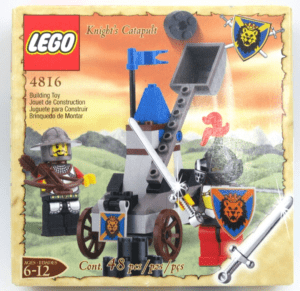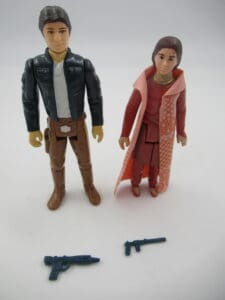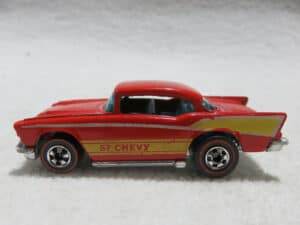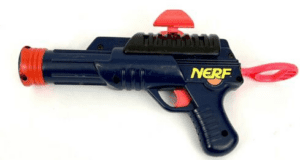We’ve been handling a boffo collection of mint-in-box toys lately, and it got us wondering: what are the biggest toy brands running? We went looking and found some answers!
LEGO

LEGO Set Circa 2000
For nearly a decade, the humble Danish building block toy has been the biggest toy brand in the entire world. It’s not hard to see why. First, their mix of in-house and licensed settings lets them appeal to a wide range of fans. Second, they market everything from simple construction sets for preschoolers all the way up to complex sets for the adult collector. No matter your age or interest, there’s LEGO makes something that will appeal to you. Their sets also provide a interesting diversion that is entirely offline and in-the-moment, something many consumers crave in this ultra-connected era
They also offer collector’s strong long-term values. As most folks already know, LEGO sets are not cheap. In fact, the retail price on the recent Atari 2600 and Nintendo Entertainment System sets are higher than the original MSRP on genuine articles! This, combined with limited production runs on higher-end sets, give them a strong secondary market value….especially if they’re sealed.
Star Wars Toys

Empire Strikes Back Kenner Star Wars Figures
Star Wars action figures have been actively made for 35 of the last 45 years! From 1978 (nearly a year after the film’s debut) to 1985, Kenner produced what collectors call the “vintage collection”. Under their new owner, Hasbro, Kenner revived the line ten years later, ahead of the film’s 20 year anniversary. The prequels, sequels, television shows, cartoons, comic books, and even novels have kept Hasbro’s action figure line chugging along for 28 years without interruption.
Disney, and George Lucas before them, have also been quite generous with the license for specialty products. This has lead to the creation of LEGO sets, video games, high-end action figures like Sideshow Toys and S.H. Figuarts, Funko Pop! vinyls, Hot Wheels starships, etc, etc. There are no unknown regions left in the galaxy of Star Wars toys. Collecting Star Wars merch is a great hobby, but shouldn’t (generally) be viewed as an investment.
Barbie
Often imitated, never replicated, the original fashion doll still reigns as the queen of the doll market. Infinitely adaptable to new settings and careers, Barbie has been an aspirational idol to children for over sixty years . With a star-studded major motion picture due out later this year, Barbie shows no signs of slowing down.
Barbie dolls, like most modern collectibles, vary wildly in value. Early releases from the 50s & 60s, as well as some high-end collector’s items, are where the secondary market value is at. If you bought it off the shelf in the last 40 or so years, it’s unlikely that it has maintained value particularly well.

An original Red Line Hot Wheels Car
Hot Wheels
Hot Wheels first raced onto the scene in 1968 and were an almost immediate hit! Unlike Matchbox, then the undisputed leader in the die-cast vehicle market, Hot Wheels based their toy designs on hot rods, funny cars, and other customized high performance cars. This gave them a hip and exciting feel that Matchbox just didn’t have. They’ve only grown from there, expanding both into more realistic and more impossible designs over the decades.
The sheer size of the Hot Wheels brand works against it in terms of long term collectible value. The original Red Line cars, as well as the modern collector-focused Red Line Club releases, are the places to look for long term value. The average release? Not so much.
Nerf

The Nerf Sharpshooter, the original Nerf blaster from 1992.
Nerf was created in 1969 by Parker Brothers as an indoor-safe ball. Designed to be tossed around the house without breaking furniture or injuring relatives, it was hugely popular. Throughout the 70s and 80s, the Nerf brand would be expanded to include indoor-friendly footballs, basketballs (with hoops!) and other soft sports equipment. The late 80s saw them release an air-launcher for small foam balls. It was a simple tube-and-plunger set up, allowing the user to suck in air before loading a ball to fire. It was the brand’s 1991 acquisition by Hasbro that would lead to its now iconic incarnation: The Nerf Dart!
The Nerf Sharpshooter, released in 1992, was the first Nerf product to fire a small foam dart. Throughout the 1990s, the dart-firing-blaster would grow to be the signature Nerf product. They range from the classic single-shot style all the way up to massive, drum-fed, flywheel-powered heavy artillery. Due to their somewhat high price point, differing modding value, and competitor preferences, the secondary market for discontinued blasters can be quite intense.








